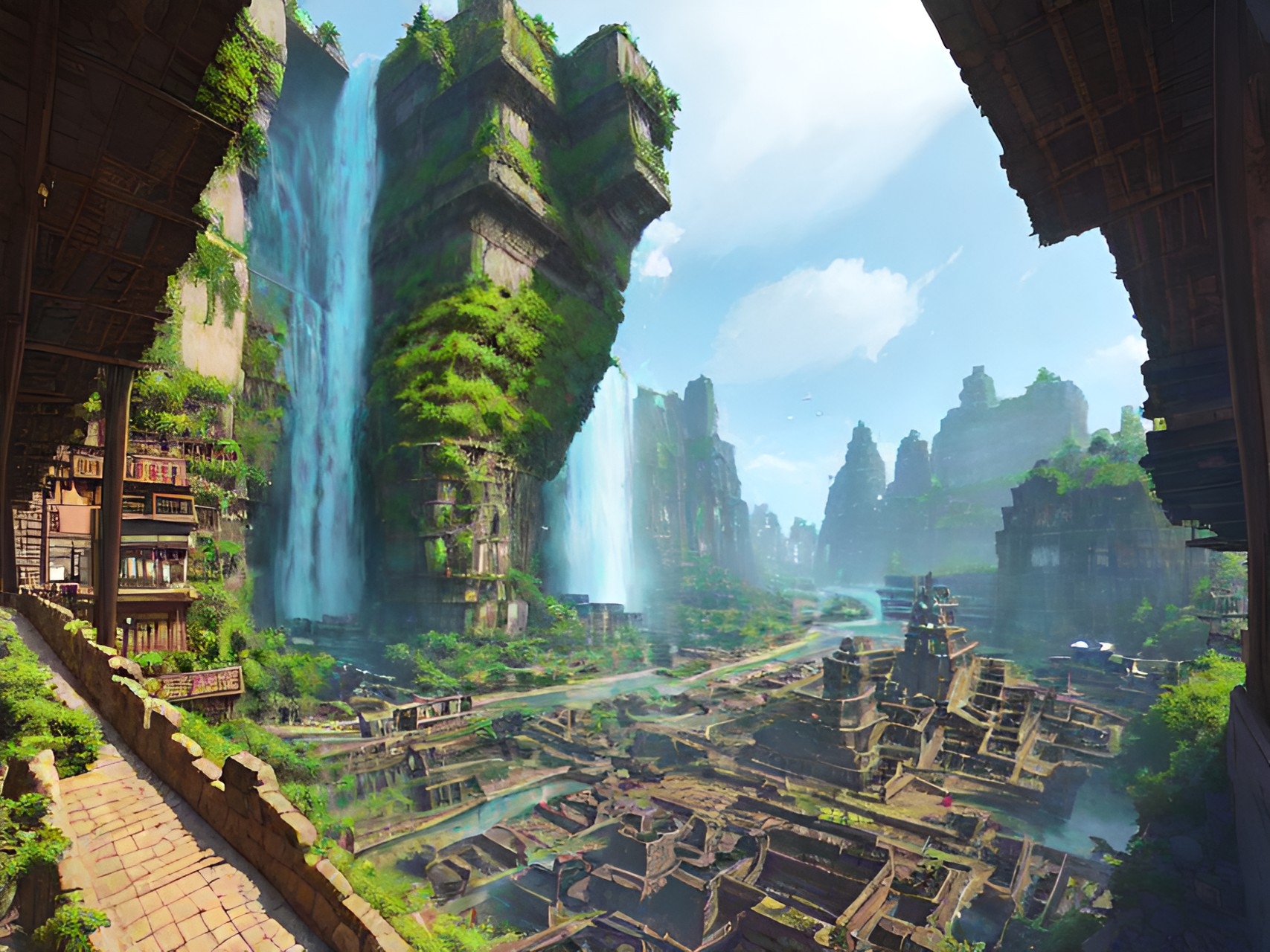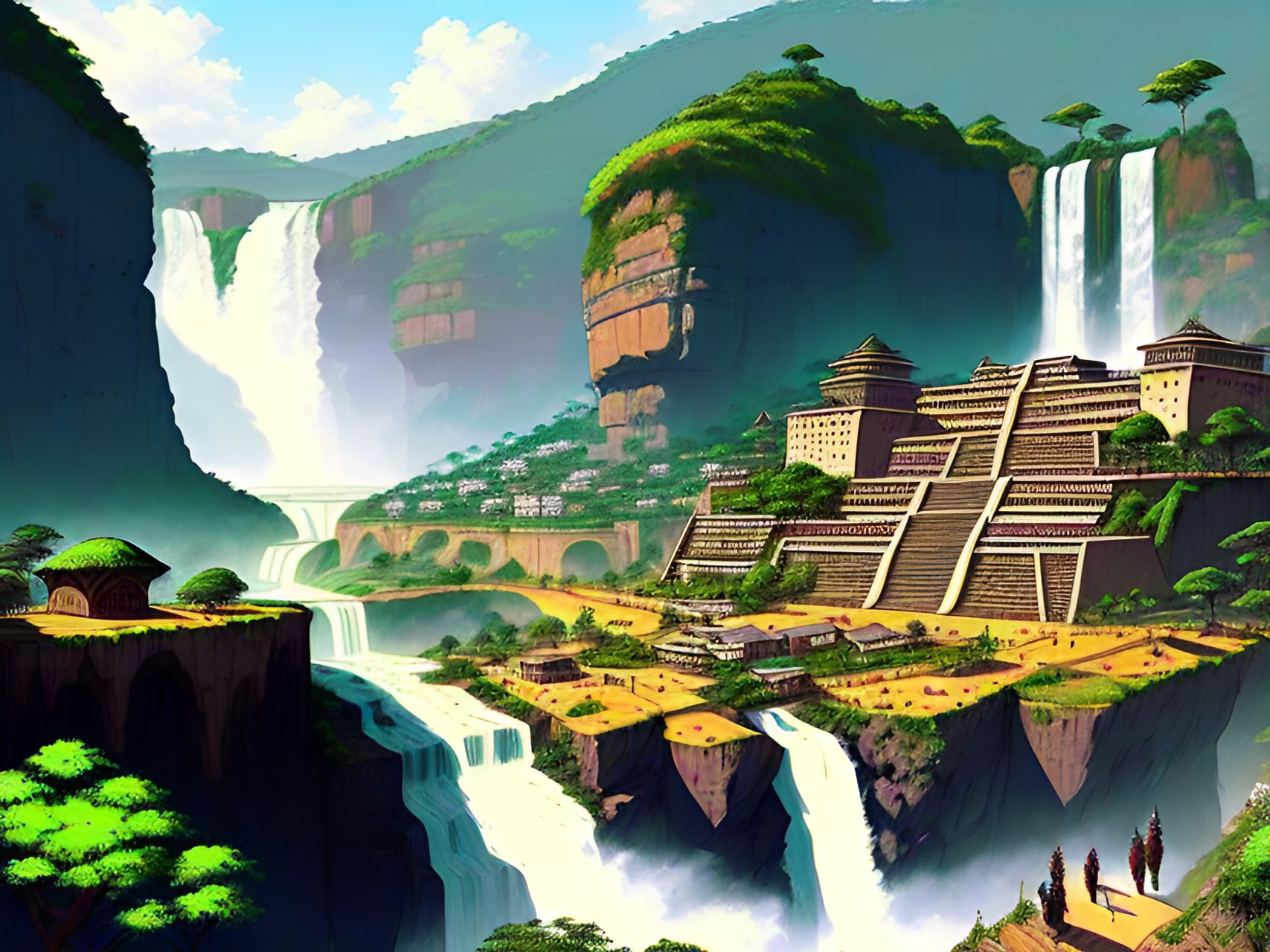Bakongo (buh-KAHN-go)
These are a nomadic and tribal people who call the southernmost end of Eluziar home. They once had a large empire which spread throughout Luxis' Cradle and even into Alkelbulan. The remains of which can still be seen in their once capital, Ntima-Kongo, along the southern edge of the Fulgurant Mesa. However, most Bakongo live a life deeply interwoven with the vibrant rainforests of Luxis' Cradle in small but tight knit communities.
These tribes are very independent and primarily tolerate the king of Ntima in order to freely access the city and it's market. Their respect for this king has only plummeted further thanks to a "treaty" he struck with the Kingdom of Accia, agreeing to allow Accian soldiers to travel the Cradle freely and "recruit" Bakongo teenagers without retaliation. In exchange, he is able to retain his position without threat of war from the kingdom. The trade deals and gold he was offered certainly sweetens this deal.
Thanks to their corrupt king, quickly bought out by the Kingdom of Accia, the kingdom's soldiers now freely roam the rainforest as they please. They patrol the jungle, regularly raiding villages and taking any child that appears close to sixteen. Most of these villages do not speak any Accian and hardly any Accians have learned Kikongo. These villages are unaccustomed to warfare, quickly overpowered by the intensively trained Accian soldiers and totally blindsided by their raids. These are a peaceful people who are intimately tight knit as a community, only worsening the wounds of these losses. The sudden abduction of their children by utter foreigners and continued inaction of their supposed king has left them rattled and desperate, none of those taken having been returned to them.
Many have fled south, especially as Pakaysacha and the Chakuqpa Runankuna have not only offered them haven but given them hope of resisting their invaders. With Supay the Huntsman leading the charge and bringing many of the Bakongo tribes together, they were even successful during the Mauling of the Iron Fort. He has offered them answers and hope but many are still wary of the Tawantinsuyu Empire that arrived with him. Now the Bakongo are squeezed on both sides by ambitious empires, uncertain of their future.
Naming Traditions
Family names
Bakongo are matriarchal, descent tracked by matrilineal lines. Children belong to their mother's lineage and the maternal uncle is in charge of them even while their father is alive. Most social organization is fragmented, nearly every village is independent of its neighbours and very little remains of the ancient Kongo kingdom.
Culture
Major language groups and dialects
Kikongo is their primary language. Dialects differ widely across the region, some can hardly be understood by speakers of other dialects. The language of the Tawantinsuyu has become more prevalent since the arrival of Supay the Huntsman, those in Pakaysacha speaking both Kikongo and Runisimi. Hardly anyone in the rainforest speaks Accian.
Common Etiquette rules
Bakongo are friendly people who typically greet each other both verbally and by shaking hands. They are very close with members of their tribe thanks to their tight knit community, sometimes far more touchy than foreigners are used to. For example, men commonly hold hands in public as a sign of friendship. Respect for authority figures and the elderly is shown by holding the left hand to the right wrist when shaking hands. Children are always supposed to receive objects with two hands.
When parting ways for a long duration, many of those with plant magic will offer a piece of their associated plant for the other to keep close to them, so a part of them can accompany the other. This can be produced by their actual racial magic or simply a local plant related to their magic. This is also done in hopes they will return before the plant wilts away and they generally display this plant in their hair or incorporate it into their clothing in some way.
Common Dress code
Bakongo wear clothing made from bark softened by pounding. Another mainstay is the sarong. They often dye their clothes in vibrant colors using flowers of the forest as dye or accessories. They will sometimes trade with the Tawantinsuyu to their south or the pirates strongholds along the coast for fabrics, offering rare plants from the jungle.
Art & Architecture
Tribal villages typically live in one-or two-room mudbrick homes with leafy rooves. Villages are relatively small and there are nomadic tribes as well. Some of these Bakongo have even taken to living up in the canopy, utilizing Torrym magic to craft buildings and bridges from living branches and vines. Pakaysacha was originally one of these villages.
Kikongo has ancient traditions of both oral and written literature. Kikongo verse is rich in proverbs, fables, riddles, and folk tales. Music and dancing are a favorite pass time for many Bakongo tribes.
Foods & Cuisine
The Bakongo have distinctive meals that incorporate meat from animals of the rainforest such as chimpanzees, crocodiles and tortoises. A local vegetable known as ‘matebele‘ also plays an important role. Most of these tribes are hunter-gatherer societies, living a life deeply entwined with the rainforest. Cooking is done mostly outside.
Birth & Baptismal Rites
Coming of Age Rites
A tradition called Longo teaches children the secrets of Bakongo traditions necessary to taking on the responsibilities of adulthood. Children learn adult behavior, including control of their physical and emotional reactions to evil, suffering, and death. The ceremonies differ drastically between the different Bakongo subgroups. These can be involved and extend to up to two months.
Common Myths and Legends
Bakongo religion focuses on ancestor and spirit cults. They believe Luxis, who they call Nzambe, is the creator of the universe and lives above in a world of ancestor spirits. They believe that when a family member dies a normal death, he or she joins this spirit world of the ancestors. That these ancestor spirits look after the living and protect their descendants. However, those who die violently or suddenly are thought to not to rest until their deaths have been avenged. Mystics are often hired to discover who was responsible for the death.
Their beliefs revolving around magic are also tied to their spiritual beliefs. While quite different than Accian mages, the Bakongo are an ancient people with their own traditions of true or material magic. Enchantments are generally called nkisi, consisting of charms and fetishes. Those with healing magic of whatever source are called nganga, most of these using herbal remedies of Material Magic. However, the truly prizes nganga are capable of True Magic, utilizing alchemy, glyphs, clairvoyance, illusionry, beastmastery and chloromancy. There is another kind of mage which is instead feared and blamed for most illness and even believed to eat souls—kindoki. They are capable of and/or practice forbidden magics such as puppetry, blood magic, telepathy and oration. They believe the kindoki's magic is invasive and unnatural and these mages are often driven out of villages.
Ideals
Relationship Ideals
Although young people may initiate courtship, marriage is often arranged by the family with older siblings or extended family members suggesting possible partners. The Bakongo family is a nuclear unit and is usually monogamous.
Women can give birth to as many as ten children, though many often don't live to adulthood thanks to the dangers of the rainforest—especially local wildlife. For this reason, much of their racial magic is defensive or are useful for camoflauge within the jungle. Children are a sign of wealth and parents consider themselves blessed to have many children.
Major organizations
In the past, they had an elaborate and balanced political system. A king ruled surrounded by a council of twelve advisers, nominated for life in the royal court and representing each province. The king could be deposed by his advisors in cases of misconduct. The king was a servant of the people and entirely elected, not hereditary. The king ensured equity among his people, maintained cosmic and social order and humbled pompous members of the community. The king was respected and represented in provinces by governors of his choice. When the king dies, it is announced so that each province can prepare a candidate. The council will vote on the new king from these candidates and the new king will then choose his new governors. However, all twelve candidates were guaranteed a title of nobility which hold some authority.
Unfortunately, the current political system is but a shadow of its former glory. The different provinces aren't as centrally organized as they were before and those living far from this ancient city often don't take these elections seriously, their lives hardly effected by these decisions—at least from their perspective. Most go through the motions and participate but are unaware of the corruption within the current court. This king keeps his advisors fat and wealthy, loyal to him alone.
This article isn't quite finished yet! Annie, Albert and I are hard at work adding and editing this article, you can expect more here in the future!





















Comments